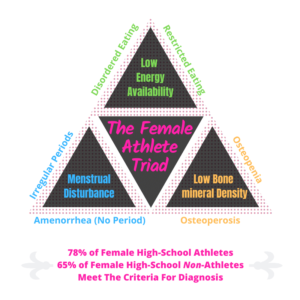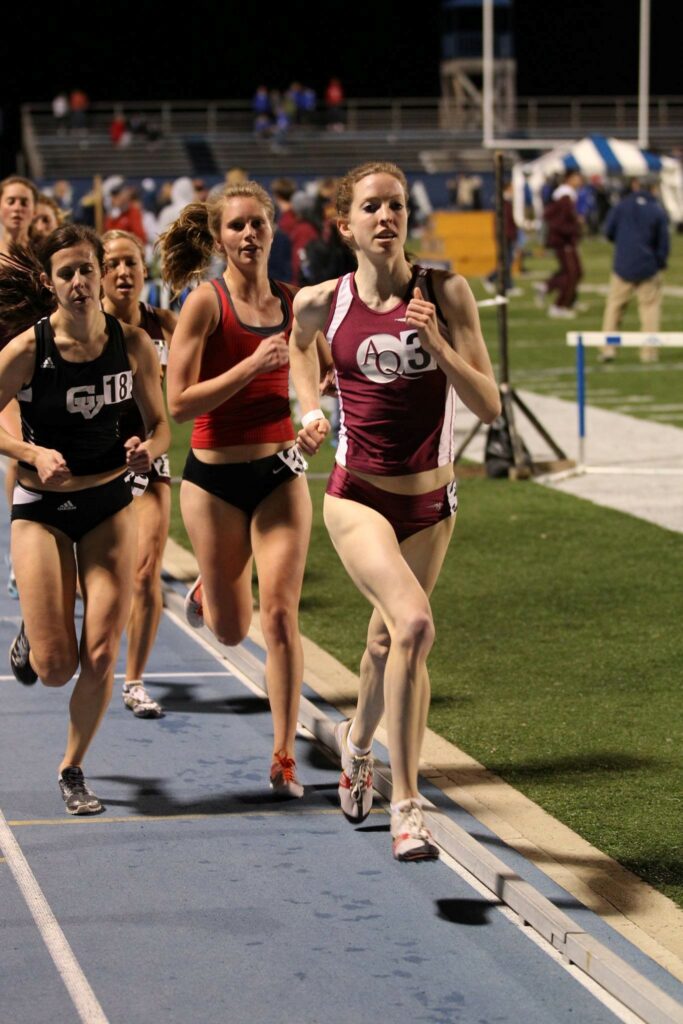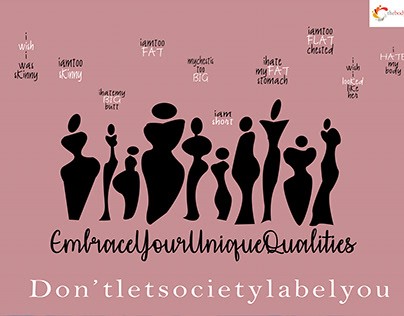Meet Amy.
Amy is a senior in high school, a cheerleader, and at the top of her class. She’s currently applying for colleges and it’s her dream to cheer at one of the top schools in the country. While Amy might look like she has it all together, she’s actually struggling internally. There’s another girl at cheer trying to take her spot. Amy finds herself running 5 miles every morning while going to a 3-hour cheer practice daily. She hardly eats anything because of the amount of stress she’s under and definitely can’t afford the extra weight that might come with eating a few extra calories because she NEEDS that spot at cheer. Because of all the stress she’s under, the excessive working out to try and maintain her spot and not gain weight, the under eating, and the fear of gaining weight, she’s now been without her period for the last 2.5 months.
This story is all too familiar, especially in the female high school athlete.
Hard work, determination, exercise, and conscious eating all have benefits for sure, but there are also some negative effects that come with these traits that most aren’t aware of…ie. the female athlete triad. There are 3 components to this disorder: 1. disordered eating, 2. menstrual dysfunction, and 3. low bone mineral density (osteoporosis) in the young, female athlete. 60% of all female athletes experience at least one of these components, which means it happens a lot more frequently than you’d think. This disorder is often unrecognized and can be extremely detrimental leading to fractures, absence of menses, and nutritional deficiencies that can be tough to recover from. Early recognition and prevention of this triad yields the greatest prognosis.
So here’s what you need to know…
The Triad. What is it?
1. Disordered eating. This could be any type of harmful behavior associated with eating that alters the athlete’s energy availability (ie. how much energy is left over after exercising). Two of the most common disorders are anorexia nervosa and bulimia nervosa. These behaviors lower the athlete’s overall energy to where they aren’t eating enough to even maintain their body’s basic needs to function (to maintain bone
health, reproductive health, growth, immunity, metabolism).
2. Menstrual dysfunction. Periods are normal and SHOULD be occurring monthly, no matter the training intensity. Irregular periods can be caused by overtraining, stress, dieting, and weight loss, which affects the hormones associated with menses and alters the menstrual cycle.
3. Low bone mineral density. This is a decreased amount of calcium and minerals in bones, making bones weak and increases the risk for fractures. Peak bone mass is achieved by 20-25 years old, so the adolescent female has the greatest risk for developing long term issues associated with low bone mineral density. Bone density can be affected by hormonal deficiencies due to an insufficient diet and/or excessive exercise causing the body to break down more bone than it grows.

Who it affects…
Female athletes that participate in sports that look for thinness (dancing, gymnastics, cheerleading, figure skating, and distance running) are at the highest risk for developing one or more of the components of the female athlete triad. For example, elite gymnasts may feel the need to starve themselves as a way of avoiding gaining weight that could negatively impact their performance. Cheerleaders may lose weight, even if unhealthy, in order to maintain a certain position. Runners may think if they weigh less, they’ll be faster. These athletes continuously focus on weight loss, strive to be thin, and are dissatisfied with their bodies because they think they are heavier than they actually are. They may even feel pressure to lose weight from coaches, parents, fashion trends, and advertising. It’s important to understand that these sports AREN’T the only sports that the female athlete triad can take place. It’s just as possible for a soccer player, tennis player, or basketball player to develop these components as a means of improving their performance or body image.

Why it matters…
Low energy availability (nutrition) is considered the backbone of these three components because it affects the body’s ability to build bone, maintain muscle mass, repair damaged tissue, and recover from injury. Menstrual dysfunction (caused by a disruption in hormones from low energy availability) can lead to infertility and unexpected pregnancy. It can also lead to decreased estrogen, which can lead to cardiovascular disease, increased levels of LDL (bad) cholesterol, and decreased immune function. Low energy availability has specifically been linked to depression, low self esteem, and anxiety disorders. Female athletes who go 3 months or longer without a period also tend to have a 2 to 4 times greater risk for stress fracture as compared to females who regularly have their period.

What to do about it…
PREVENTION is key! Usually, physicals and/or annual health check ups are when screenings should take place. Doctors should be able to pick up on any of the 3 components of the triad, but knowing the components yourself will ensure that this isn’t overlooked.
If you ARE diagnosed with the triad, the best treatment is this:
TEAM UP. A multidisciplinary approach, which combines support from a primary care or sports physician, nutritionist/dietician, sports physical therapist, coach, and family members will ensure a well rounded plan to beat this triad.
ADJUST your diet and exercise! A nutritionist/dietician and sports physical therapist can work closely together in order to come up with a plan that increases energy availability while building bone mineral density. A sports physical therapist will prescribe the athlete a safe and individualized strengthening regimen without increasing the risk for fracture while the nutritionist/dietician will make sure they’re eating enough to meet their daily needs, build strength, and repair damaged tissues.
ALTER your mentality. This is quite possibly the hardest concept to accomplish, but is also what will lead to the greatest success in beating this triad.These athletes tend to have determined, competitive, and perfectionist personalities, which are usually desired qualities, but can also be their downfall. In most cases, especially if there’s an associated eating disorder, a mental healthcare professional should be added to the athlete’s circle to help educate and overcome whatever they’re dealing with.
The female athlete triad is often overlooked, not just by female athletes, but by coaches and physicians as well. Many young female athletes struggle with this disease, whether they know it or not. This is a potentially serious condition that should be more of a priority in health care and the athletic world. Knowing that missing your period isn’t just a sign of “working hard” is something that all coaches should be aware of. Female athletes should have a period every month regardless of how much effort is being put into practices, games, matches, or sessions. The female athlete triad needs to be talked about more frequently, so that females can catch the signs early and prevent injury down the line. If the female athlete triad is an area of concern for you – we would love to help!

Thanks for reading!
Dr. Aerial
Havana Charles, Lander University

